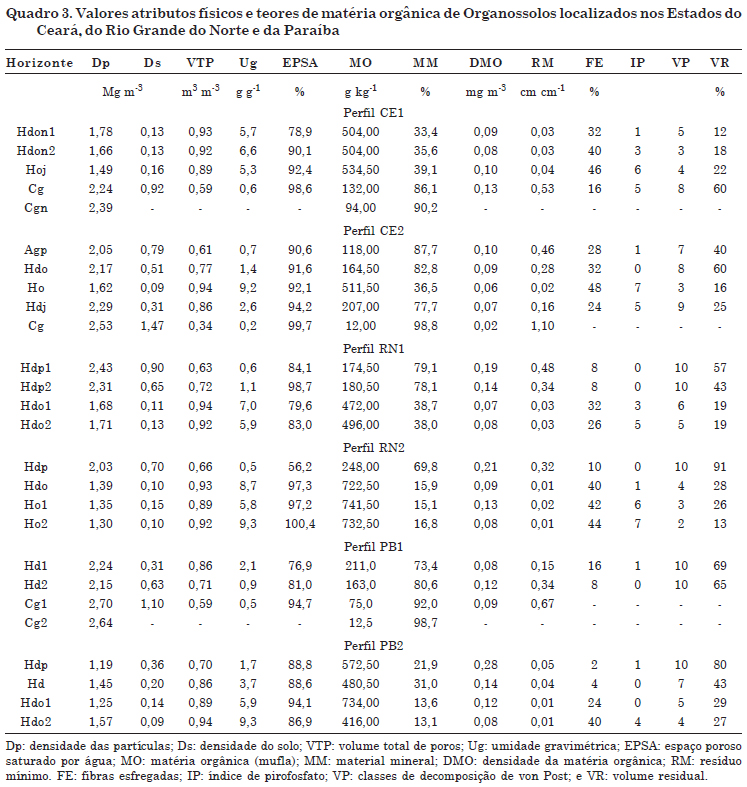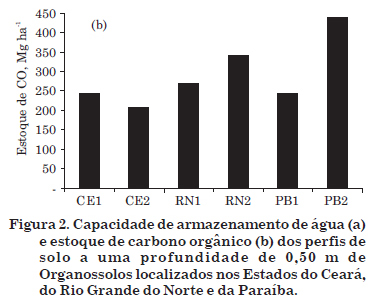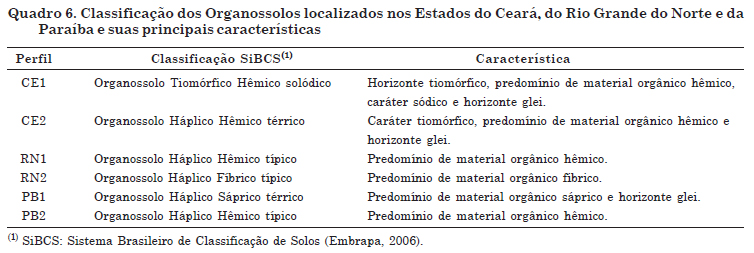The Histosols are generally associated with Southeastern and Southern regions of Brazil, and there are few studies on the occurrence and effects of the use and agricultural management of these soils in the Northeast. The aim of this paper is to physically, chemically and morphologically characterize six profiles of Histosols from flood plains in the states of Ceara, Rio Grande do Norte and Paraiba, Brazil and correlate their soil properties to the training environment, as well as quantify their carbon stores and water storage capacities. We used the methods recommended in the Brazilian System of Soil Classification (SiBCS) for chemical and physical characterization, moisture content and residual volume soil. The increase in the values of bulk density (BD) in the horizons was due to greater decomposition of rubbed fibers (RF) and decrease in soil organic matter. Residual volume was positively and significantly (5 %) correlated with the minimum residual value (r = 0.64) and BD (r = 0.74) and negatively correlated with the percentage of RF (r = -0.75), and it can be used to assess the subsidence of these soils. Chemical properties were affected by the material of organic origin and fluvial-marine sediments. Drainage variation, influenced by position in the landscape and crop use of the soils, led to classes with different degrees of decomposition of organic matter and, thus, Fibric, Hemic and Sapric classes of 'Organossolos'. One of the CE1 profiles, with greater influence from marine sediments, was classified as an 'Organossolo Tiomórfico' of a solodic nature.
soil organic matter; hydromorphism; subsidence; water storage










